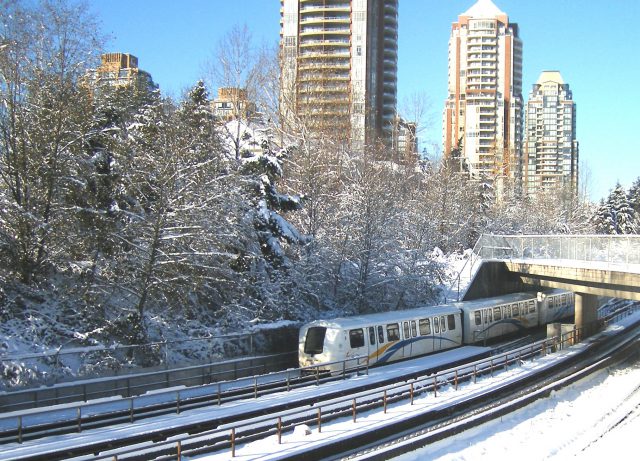Transit tips to manage inclement weather
Transit tips to manage inclement weather
We might be getting snow soon in Metro Vancouver sometime soon. Here are some transit travel tips that can help make your ride more comfortable for you and your fellow commuters.
Know before you go.
If there’s snow or ice ensure you plan ahead with Trip Planner or m.translink.ca on your mobile device, and make sure to allow yourself extra commuting time.Sign up for transit alerts so you’ll be the first to know if there are changes in the transit schedule.
Follow our customer information team on Twitter (@translink), Facebook (TransLink) and save their number (604) 953-3333 on your mobile device.
Step Carefully
Snowy floors can become slippery floors. Where possible, kick the snow from your shoes before getting on the your chosen mode of transit. Use handrails and please be courteous to other passengers and don’t put your feet up on open seats.
Dress Warmly
While your ride will be climate controlled, we can’t control the temperature outside of our vehicles. Make sure that you’re dressed warmly for your trip to and from your stop.
Be Courteous
Please remember that transit is a popular choice on snowy days, therefore you may see more people out than usual. Always use your common transit sense to ensure a comfortable ride for everyone.
We’re doing our part too! Here’s what we do on our end to ensure service runs smoothly during inclement weather:
Consistent monitoring
Winter weather forecasting means more staff, buses and SkyTrains can be quickly deployed to keep riders moving.
Slow and steady
During adverse weather, operators are instructed to drive slower and with added caution to keep riders safe. Additionally, operators have a snow/ice switch which gives the bus tires better traction in the snow.
Play it safe
If a street is not plowed, operators may refrain from pulling into bus stops to avoid getting stuck. In these cases, operators will stop in an area that is safe and accessible for riders.
Trolley de-icer trucks will deploy spraying the entire trolley overhead system if there is a forecast risk of frost or ice. SkyTrain power rail and collector shoes on the trains will be de-iced as well as de-icing stations will be set up in covered areas and tunnels to prevent ice and snow compacts on the trains. Measures are also taken to make sure switches are protected from freezing.
During times of overnight snow, SkyTrain will run throughout the night to keep tracks clear.
If needed, articulated buses will be replaced by traditional buses as they’re more agile in and better equipped to handle hills or on streets that have poor conditions.
Canada Line trains are equipped with new breaking modes for train cars, similar to the ABS systems you find on some vehicles.
What are your tried and true snowy weather commuting tips?
Author: Sarah Kertcher






